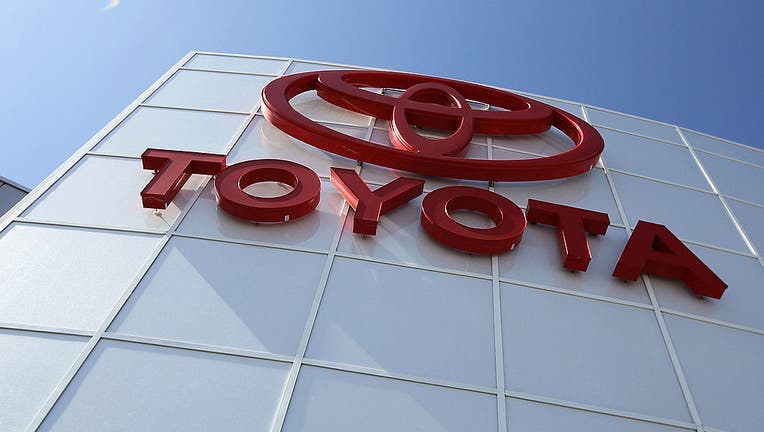Toyota to launch 2 US-made EVs in 2025, expand lineup to 7 by 2027

The Toyota logo is displayed on the exterior of City Toyota May 11, 2010 in Daly City, California. (Photo by Justin Sullivan/Getty Images.)
LOS ANGELES - Toyota’s electric vehicle strategy is taking a major leap forward. After years of cautious movement, the automaker is committing to building two new all-electric models in the U.S. starting next year—part of a broader plan to offer seven EVs by 2027.
The company isn’t abandoning its hybrid-first approach, however. With U.S. EV sales growing slower than expected, Toyota is hedging its bets through global exports and hybrid dominance while expanding battery production on American soil.
Where will Toyota build its new EVs?
Toyota’s two largest American factories will each host production of one new EV model.
In Georgetown, Kentucky—Toyota’s biggest plant globally—the upcoming electric vehicle will join an existing lineup that includes the hybrid-only Camry, the RAV4 (soon dropping its gas-only version), and the Lexus ES.
In Princeton, Indiana, Toyota will produce another all-electric model alongside larger vehicles like the Sienna, Highlander, and Grand Highlander. The company hasn’t yet disclosed what that new EV will be.
How many electric vehicles will Toyota offer by 2027?
The backstory:
Toyota currently sells two all-electric models in the U.S.: the bZ4X, which will be renamed simply "bZ," and the Lexus RZ. By mid-2027, five more will join the lineup:
- Two new EVs built in the U.S.
- Three imported EVs: the bZ Woodland, a new all-electric CH-R crossover, and an EV version of the Lexus ES.
That expansion reflects a growing, though still measured, embrace of full electrification. In 2024, EVs made up just 8% of U.S. auto sales, and Toyota sold fewer than 30,000 fully electric vehicles domestically.
How is Toyota powering this EV push?
A key driver of the strategy is Toyota’s new battery plant in Liberty, North Carolina. The massive facility spans 1,850 acres and will begin shipping lithium-ion cells later this year.
Ten of its 14 production lines will serve electric vehicles, with the rest focused on hybrids. At full capacity, it will support 30 gigawatt-hours of annual output—enough for:
- 300,000 fully electric vehicles
- 150,000 plug-in hybrids
- 800,000 traditional hybrid vehicles
The first hybrid battery line is set to go online next month, with the rest rolling out through 2034.
Why is Toyota still hesitant about EV demand?
The other side:
Despite its expanded EV roadmap, Toyota remains cautious. Executives are wary of weak U.S. demand, especially compared to markets like China and Europe. To safeguard production targets, Toyota will rely heavily on exports—only committing to full-scale production once a vehicle is expected to move 100,000 to 150,000 units annually.
However, that plan could face new headwinds. President Trump’s proposed tariffs could trigger trade tensions and disrupt Toyota’s global export strategies, which are key to absorbing any U.S. oversupply.
What they're saying:
Toyota officials have repeatedly emphasized their preference for letting the market—not mandates—dictate EV adoption. While some automakers are going all-in on battery electric vehicles, Toyota continues to highlight the role of hybrids and the need for flexible, diversified strategies.
Executives have argued that hybrids remain a more affordable and scalable solution for many consumers, especially amid high EV sticker prices and limited charging infrastructure in parts of the U.S.
Why you should care:
Toyota’s pivot could reshape the American EV landscape. As one of the world’s most influential automakers, its decisions carry weight.
By backing U.S. manufacturing and battery production—while maintaining global fallback options—Toyota is laying a cautious but potentially powerful blueprint for the industry’s next phase.
The Source: This article is based on information from Toyota Motor Corp.’s official announcements and industry reporting on the company’s North American production strategy. Additional context about U.S. EV market conditions, sales data, and the role of Toyota’s hybrid program is drawn from 2024 industry figures and media coverage analyzing the automaker’s evolving position in the global electrification race.

